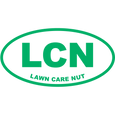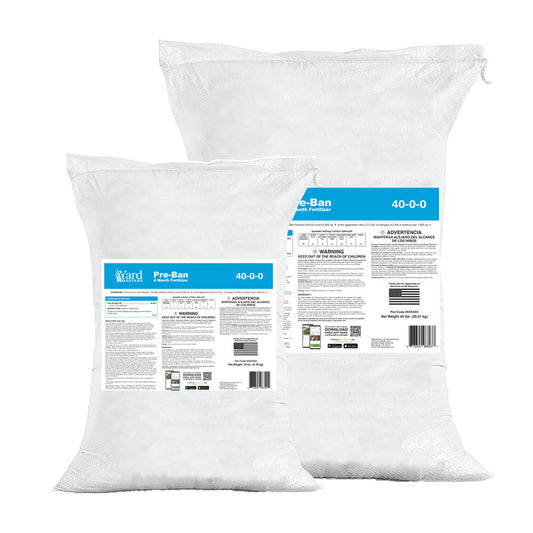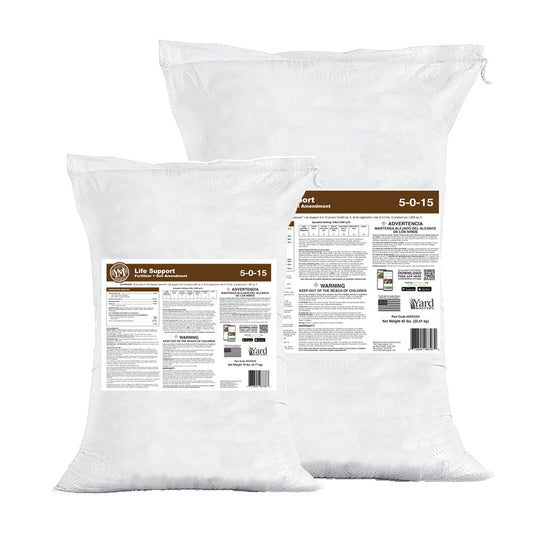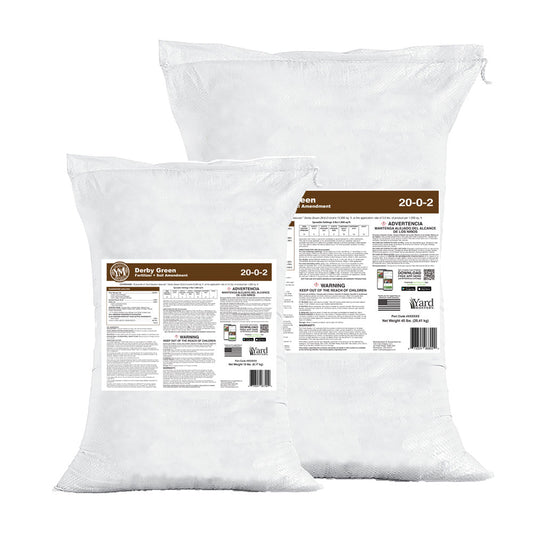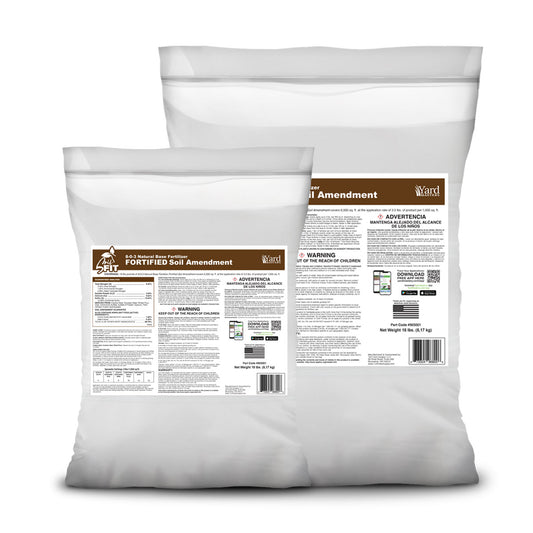Today we are going to look at post emergent weed control for warm season lawns. A “post emergent” weed control is one that is designed to kill weeds that have already shown themselves in the lawn. If you’ve been here for a while, you know that I also talk a lot this time of year about pre-emergent weed controls. These are ones that stop weeds BEFORE they show themselves. In my strategies, we use both.
In case you missed it, here is an article I wrote on the pre-emergent weed control I recommend called prodiamine, and how it works.
Post Emergent Weed Control
St Augustine grass, Bermuda grass, Bahia, Centipede and Zoysia
For post emergent weed control, I always recommend that DIYers try store bought weed controls first. This is because store bought stuff isn’t as concentrated as “professional” formulations which leaves you more room for error.
Additionally, professional formulations are not typically available in small batches or small bottles. As a DIYer with a 5,000 sq ft lawn, you may not need an entire gallon of weed control that can cover an acre or more. Instead you need a quart that is big enough for you to do 1 or 2 applications without a bunch leftover to store in the garage.
DIY vs Professional Weed Control
Today we are going to look at two weed controls that are going to surprise you when you get to the end of this article. They are Image for Southern Lawns (DIYer formulation) and Avenue South herbicide from PBI Gordon (professional formulation).
Keep in mind, these are “selective” weed controls which means they only kill select plants (broadleaf weeds) and not the lawn.
Image Southern Lawn Weed Killer concentrate comes in a quart and costs $14.18

Avenue South Broadleaf Herbicide for Turfgrass from PBI Gordon comes in a gallon and costs $152.87

Don't’ get sticker shocked! Keep reading and learn - I promise you’ll get some good info here that will help you make better decisions for your budget going forward.
Image Southern Lawn Weed Killer

This is Image Southern Lawn Weed Killer (purple label) and you can find it at Lowes and Home Depot in most southern states where warm season turf grows. It’s available in a hose end sprayer option and also a concentrate. The concentrate is what I typically use and I mix it in water in my backpack sprayer. I’ll be making a video here soon on my YouTube channel showing you how to mix and spray it. Subscribe here.
In the meantime, let’s look at the active ingredients and their concentrations, then I’ll compare that to a professional formulation with the very same ingredients and we will make some comparisons and draw some conclusions from it. I bet you the results will be surprising to you!
Active Ingredients for Image Southern Lawn Weed Killer:
On the front of every weed control you buy, down in the bottom corner, will be the list of active ingredients. On the Image for Southern Lawns, they are:
Penoxsulam.............................................0.14%
Sulfentrazone...........................................0.14%
2,4-D, dimethylamine salt.........................1.46%
Dicamba, dimethylamine salt ...................0.41%
The percentages you see next to them indicate the concentration. For example, the concentrate bottle is 32 oz. Of that 32 oz, 1.46% is 2,4-D dimethylamine salt. That means there is literally .47 oz of that chemical active ingredient in the entire bottle.
Check the math:
32 oz bottle
1.45% 2,4-D
32 x 1.46% = .47
Dicamba is also an auxin herbicide and it represents .41% of that 32 oz bottle. That means there is literally only .13 oz of dicamba in the entire bottle. That’s it!
I’m drawing your attention to this because I want you to understand that these are extremely efficient chemicals! It only takes a finite amount of them to kill the target plant. Just wait until we dilute it in water (mixing in the sprayer) and then you’ll REALLY see what I’m talking about. But until then, let’s learn how these synthetic auxins kill because it’s pretty cool.
2,4-D and Dicamba are Synthetic Auxins
Synthetic Auxins (Group 4) can also be referred to as plant growth regulators but not in the way most of you think about it. In our community, we often think of “plant growth regulators” as chems that slow down the lawn’s growth. Guys with bermudagrass especially will use them so they don’t have to reel mow every single day. “PGRs” are used alot on low cut lawns, but that’s a completely different class of chems.
The auxin growth regulators we are referring to with 2,4-D and Dicamba do the opposite. They speed things up beyond the plants’ ability to survive.
Auxins are systemic herbicides which means they get inside the plant either through the leaves or the roots or both, and work their way up, down and all around the interior of the plant. They get in and speed up and disrupt the plant’s internal processes.
Broadleaf weeds exposed to auxin herbicides basically grow so fast they blow up from the inside out. At higher concentrations, you’ll see weeds twisting, curling and cupping, sometimes just a few hours after the application is made.
Picture it this way: do you remember the scene from Raiders of the Lost Ark where Belloq and Toht’s heads melt and explode when the wrath of God gets into them? It literally looks like that when the broadleaf weed dies. The only difference is that the weed may take a week or more to completely blow itself out but along the way, it looks just like that clip from Raiders; just green and yellow instead of red.
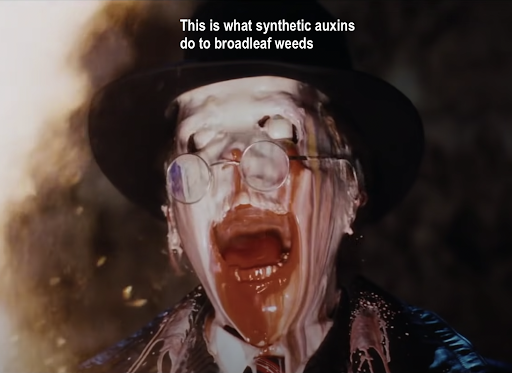
You’ll find these two auxin herbicides in cool season lawn weed killers too, albeit in different concentrations.
Those two herbicides 2, 4-D and Dicamba are very effective against broadleaf weeds but they don’t perform along in this mix. There are two other active ingredients riding along in this mix that attack the weeds in a different way.
Sulfentrazone is a PPO Inhibitor
This active ingredient (Group 14) represents just .14% of the total but it brings a completely different mode of action to the mix. PPO inhibitors are more contact type herbicides rather than systemic. They basically burn the outside of the leaf tissue turning it brown.
Penoxsulam is an ALS Inhibitor
Penoxsulam is a Group 2 herbicide and its mode of action is also referred to as an amino acid synthesis inhibitor. What it does is shut off the plant’s ability to produce a specific enzyme, acetolactate synthase. Without that enzyme, the plant can’t produce amino acids which are the building blocks of cells. This herbicide works systematically and is absorbed through the leaves of the plant.
Image for Southern Lawns - a Triple Threat
So we have 4 active ingredients spanning 3 modes of action. “Mode of action” means “how the chemical kills.” Because we have 3 distinct modes of action in the Image for Southern Lawns, we have a broad range of weeds that we can target and that is awesome for those of us in the south where there are seemingly hundreds of different weeds we face.

On the label of Image, you can see the list of weeds that it will kill. It’s not going to be 100% effective on all of them with just one application, but usually with 2 apps, you can get control of most things that you’ll have come across.
Some of the common weeds I face and have used it on are:
Clover - does very well here, but will take 2 applications.
Chickweed - knocks it out fast
Dayflower - for sure takes 2 apps at the high rate
Dollarweed - for sure takes 2 apps at the high rate
Chamberbitter - does very well
Doveweed - works if you get on it early, but won’t do much on mature doveweed
Florida Pusley - Florida Snow - knocks it out fast.
Nutsedge (yellow, kyllinga) - does not work well at all
Oxalis - works good and fast
Spurge - works well, may take 2 apps
Note: the label says you need to leave 30 days between applications. That tells me that at least one of these chems has some residual effects that last a while.
How Much Image For Southern Lawns to Use
On the label you’ll find different use rates for each grass type. For St Augustine grass the rate is 5.2 - 8.6 oz per 1,000 sq ft. For bermudagrass, bahia grass, zoysia grass and centipede, the rate is 6.2 - 8.2 oz per 1,000 sq ft.

Here in Florida, I like to use the highest rate for each application. For my St Augustine grass, that rate is 8.6 oz per 1,000 sq ft.
I make the applications using my 4-gallon backpack sprayer and I put 34.4 oz of concentrate into 4 gallons of water and that mix covers 4,000 sq ft.
Last week I made a video where I talked about some of the standards we use when spraying a lawn. One of those is that 1 gallon of spray mix covers 1,000 sq ft. If you’re confused a little on this part, watch that video and you’ll understand much better!
How Much Chemical is in the Mix?
Ok so let’s do some more math. Remember above we talked about percentages of active ingredients? Let’s look at that now as we mix it into our 4 gallon backpack (with water) and cover 4,000 sq ft.
Total Concentrate: 34.4 oz - covers 4,000 sq ft
Penoxsulam.............................................34.4 x 0.14% = .05 oz
Sulfentrazone...........................................34.4 x 0.14% = .05 oz
2,4-D, dimethylamine salt.........................34.4 x 1.46% = .5 oz
Dicamba, dimethylamine salt ...................34.4 x 0.41% = .14 oz
Keep in mind, this is enough to kill weeds across 4,000 sq ft. So as an example, there is only .05 oz of Penoxsulam in the mix to go across 4,000 sq ft. Can you see now how targeted these chemicals are? There is hardly any going down yet it’s still killing all those weeds you spray.
It Doesn’t Take Much!
This goes back to the chemicals being scary to some people. I wrote about this in depth last week on the blog. One way to think about this is what I call “pounds on the ground.”
As new chemistries have been developed over the years, scientists have found active ingredients that work well with VERY little actual “pounds on the ground” needed, or said another way, a little can go a LONG way. This results in much less total chemical output in the lawn.
If you look at it this way, you’re really not spraying that much chemical on your ground. It’s mostly water. Sure, you can smell the chemicals. Weed controls have a distinctive aroma, but there is only .05 oz of Penoxsulam in an entire 4 gallons of water. (4 gallons is 512 oz).
Percentage wise it looks like this:
4 gallons = 512 oz
.05 / 512 = .000098 % Penoxsulam in the mix.
See how finite that is?
Of that 512 oz of spray mix, .0000098% of it is Penoxsulam chemical.
And yet it can kill weeds in your lawn even at that very low concentration. Science is pretty awesome right?
Just keep in mind, it’s not doing this by itself. There are still 3 other active ingredients in the same mix but they are also at VERY low concentrations. Because they target plants (weeds) are being hit from 3 different modes or sites of action, you can get away with a super low concentration of each. That’s smart!
Professional Weed Control - Avenue South
I hope you had fun with all that math because next we are going to look at a professional formulation of the very same active ingredients. This formulation has a band name called “Avenue South” and it’s a very popular weed killer used many professional spray services.
Here are the active ingredients with their concentrations:
Penoxsulam. . . . . . . . . . . . . . . . . . . . . . . . . . . . . . . . . . . . . . . . 0.70%
Sulfentrazone . . . . . . . . . . . . . . . . . . . . . . . . . . . . . . . . . . . . . . 0.70%
2,4-D, dimethylamine salt . . . . . . . . . . . . . . . . . . . . . . . . . . . . . 7.28%
Dicamba, dimethylamine salt . . . . . . . . . . . . . . . . . . . . . . . . . . 2.06%
Immediately you will notice the concentrations of each of the active ingredients is quite a bit higher. Will this get better results? Possibly, but we don’t have enough information to determine that yet. We have to read further on the label and learn what the recommended application rates are from the manufacturer, PBI Gordon.
For St Augustine grass they are telling me that the “high rate” is 1.8 oz / 1,000 sq ft. That’s quite a bit less than the 8.6 that is recommended as the high rate on Image for Southern Lawns. So let’s do some math to see if we net out at a higher amount of chems.
In my 4 gallon backpack, I’ll need 4 x 1.8 = 7.2 oz
That translates to:
Avenue South
Penoxsulam. . . . . . . . . . . . . . . . . . . . . . . . . . . . . . . .. . . . . . 7.2 x 0.70% = .05 oz
Sulfentrazone . . . . . . . . . . . . . . . . . . . . . . . . . . . . . . . . . . . . 7.2 x 0.70% = .05 oz
2,4-D, dimethylamine salt . . . . . . . . . . . . . . . . . . . .. . . . . . . 7.2 x 7.28% = .5 oz
Dicamba, dimethylamine salt . . . . . . . . . . . . . . . . . . . . . . . . 7.2 x 2.06% = .15 oz
Here’s how that compares to the max rate mix in Image for Southern Lawns:
Image for Southern Lawns
Penoxsulam.............................................34.4 x 0.14% = .05 oz
Sulfentrazone...........................................34.4 x 0.14% = .05 oz
2,4-D, dimethylamine salt.........................34.4 x 1.46% = .5 oz
Dicamba, dimethylamine salt ...................34.4 x 0.41% = .14 oz
They are the same!
What’s More Expensive?
Image for Southern Lawns vs Avenue South Herbicide
Knowing this, now we can make a decision solely based on price. Since they deliver the exact same amount of active ingredient with each application, which one of these is cheaper? Is it the DIY/homeowner concentrate from Image or will it be the professional formulation Avenue South from PBI Gordon.
Let’s take a look.
Image for Southern Lawns Concentrate
Size: 32 oz
Cost: $14.18
Application Rate: 8.6 oz/1,000
Coverage: 3,720 sq ft
32/8.6 = 3.720
$14.18 / 3.720 = $3.82
Cost per 1,000 sq ft = $3.82
Avenue South Herbicide Concentrate
Note: in the pics here I show a small sample bottle of Avenue South. That isn’t available for retail sale. The smallest you can actually buy is a 1 gallon jug. That is because this product is marketed to lawn professionals who typically mix in large tanks for truck mounted skid sprayer applications
Size: 128 oz (1 gallon)
Cost: $152.87
Application Rate: 1.8 oz/1,000
Coverage: 71,111 sq ft (an acre is 43,500 sq ft)
128/1.8 = 71.111
$152.87 / 71.111 = $2.15
Cost per 1,000 sq ft = $2.15
Conclusion
In the case of Image for Southern Lawns vs Avenue South, if you can afford to buy the gallon up front, you’ll save money in the long run. However, you also have to consider the size of your lawn. If you have a 5,000 sq ft lawn in the suburbs and you purchase the Avenue South, you will get 14 applications from it. And that is if you have to completely blanket spray.
1 gallon covers 71,111 sq ft
5,000 sq ft lawn
71,111 / 5 = 14.2
Practically speaking, I highly doubt you would need to make that many blanket applications over the years. You’re probably going to end up blanket spraying 1 time per year and spot spraying the rest which means this 1 gallon jug will last you more than a decade. That’s also probably much longer than the shelf life of the product itsel.
So my recommendation for DIYers is to stick with the Image for Southern Lawns available to DIYers at any big box store.
I’ll see you in the lawn!
